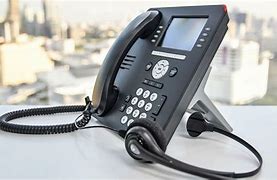
Daftar isi: [Hide]

In today’s fast-paced business environment, effective risk management is crucial for success. Virtual data rooms (VDRs) have emerged as a powerful tool to enhance risk mitigation strategies. These secure, cloud-based platforms offer a centralized repository for sensitive information, facilitating secure collaboration and streamlining complex processes. By leveraging the capabilities of VDRs, organizations can significantly improve their risk management frameworks, ultimately reducing exposure to potential threats and ensuring business continuity.
VDRs provide a robust foundation for secure data storage and access control, safeguarding confidential information from unauthorized access and breaches. Their advanced security features, including multi-factor authentication, encryption, and audit trails, create a secure environment that instills trust and confidence in stakeholders. This is especially important for organizations engaged in mergers & acquisitions (M&A) transactions, due diligence, and legal proceedings, where sensitive financial, legal, and operational data needs to be protected from unauthorized access. By eliminating the need for physical data rooms and the associated risks of mishandling or misplacing sensitive documents, VDRs empower organizations to proactively manage information security, reduce vulnerability to data breaches, and enhance their risk profiles.
Moreover, VDRs facilitate controlled access and permissions, ensuring only authorized individuals can access specific data, reducing the risk of accidental or deliberate misuse. Organizations can grant different access levels to various stakeholders based on their roles and responsibilities, ensuring transparency and accountability. This meticulous approach to data access control fosters a secure and transparent environment, mitigating the risks associated with unauthorized access and potential data leaks.
By enabling organizations to manage access, permissions, and data sharing with greater precision, VDRs empower them to make informed decisions and mitigate risks. For example, in M&A transactions, VDRs facilitate seamless communication and information exchange between the buyer, seller, and their advisors, streamlining due diligence and fostering collaborative decision-making. By offering a central hub for all essential information, VDRs enhance the efficiency and accuracy of decision-making processes, reducing the potential for costly errors or misjudgments that can negatively impact risk profiles.
VDRs contribute significantly to improved risk management by enabling real-time tracking of all document activity, providing valuable insights into data usage and potential vulnerabilities. These detailed audit trails serve as crucial evidence for compliance audits and regulatory investigations, offering assurance that information is accessed, edited, and shared in accordance with established policies and protocols. With real-time activity monitoring, organizations can readily detect anomalies or suspicious activities, facilitating prompt responses and mitigating potential risks. This enhanced transparency and accountability are fundamental for maintaining a robust risk management framework and upholding ethical data practices.
The Impact of Virtual Data Rooms on Risk Management
In today’s rapidly evolving business landscape, organizations are constantly seeking ways to maximize their operations and mitigate potential risks. Virtual data rooms (VDRs) have emerged as a powerful tool for enhancing risk management strategies across various industries. This article delves into the multifaceted impact of VDRs on risk management, exploring their functionalities, benefits, and associated risks.
What are Virtual Data Rooms?
meaning of Virtual Data Rooms
A virtual data room (VDR) is a secure online platform designed to facilitate the sharing and management of sensitive documents, typically during mergers and acquisitions (M&A) transactions, due diligence processes, or legal proceedings. It serves as a central repository for confidential information, allowing authorized users to access, collaborate, and track documents remotely.
How VDRs Work
VDRs employ robust security measures to protect sensitive data. Users require unique credentials to gain access, and activity within the platform is meticulously tracked and logged. The platform typically attributes advanced functionalities like:
- Document Upload and Management: Securely upload, organize, and manage various document formats.
- Access Control and Permissions: Grant granular access rights to varied users, limiting visibility based on their functions and responsibilities.
- Collaboration Tools: Enable real-time communication, document annotations, and collaborative workflows.
- Audit Trail and Activity Tracking: Monitor user activity, document access, and changes made to ensure accountability and transparency.
Key attributes of VDRs
- Enhanced Security: Multi-factor authentication, encryption protocols, and data backups ensure data integrity and confidentiality.
- User-friendly Interface: Intuitive navigation and easy-to-use tools facilitate efficient document management and collaboration.
- Scalability and Flexibility: Adjust storage capacity and user access based on project needs.
- Compliance attributes: Integration with pertinent legal and regulatory standards, ensuring adherence to industry regulations.
The function of VDRs in Risk Management
VDRs play a crucial function in risk management by facilitating secure and efficient workflows, minimizing potential risks associated with data sharing and collaboration.
Due Diligence and Risk Assessment
VDRs streamline the due diligence process during M&A transactions, enabling buyers to access thorough information about the target company’s financials, operations, and legal status. This allows for thorough risk assessment and informed decision-making.
M&A Transactions and VDRs
VDRs are essential in M&A transactions, serving as a secure repository for confidential information, such as:
- Financial Statements and Projections
- Legal Documents and Contracts
- Intellectual Property and Patents
- Operational Data and Reports
By leveraging VDRs, parties involved in M&A transactions can:
- Share Information Securely: Sensitive documents are protected from unauthorized access.
- Improve Transparency and Communication: Real-time access and collaboration enhance transparency and facilitate efficient communication.
- Reduce Risks: Enhanced security and audit trails mitigate risks associated with data breaches and regulatory non-compliance.
VDRs in Legal and Regulatory Compliance
VDRs assist in maintaining regulatory compliance by providing a secure and auditable platform for sensitive information. They ensure that:
- Data is Secure: Robust security measures meet industry standards and regulatory requirements.
- Access is Controlled: Access restrictions and granular permissions comply with data privacy laws.
- Activities are Tracked: thorough audit trails offer evidence of data access, changes, and compliance efforts.
benefits of Using VDRs for Risk Management
Utilizing VDRs for risk management offers numerous benefits, including:
Enhanced Security and Confidentiality
- Data Encryption: Sensitive documents are encrypted at rest and in transit, protecting them from unauthorized access.
- Access Controls: Users are granted specific permissions based on their functions and responsibilities, ensuring data security and confidentiality.
- Audit Trails: A thorough record of user activity and document access allows for accountability and transparency.
Streamlined Due Diligence Process
- Centralized Repository: A single platform for all pertinent documents simplifies document management and improves efficiency.
- Real-Time Access: Authorized users can access documents from anywhere, anytime, facilitating rapid due diligence processes.
- Collaboration Tools: Real-time document annotations and communication tools streamline collaboration between stakeholders.
Improved Communication and Collaboration
- Secure Communication: VDRs offer a secure platform for communication and collaboration, ensuring that sensitive information is shared responsibly.
- Real-Time Updates: Updates and changes to documents are reflected in real-time, ensuring all stakeholders have access to the latest information.
- Document Sharing: Simplified document sharing and access control mechanisms streamline collaboration and reduce communication bottlenecks.
Reduced Costs and Time Efficiency
- Reduced Printing and Shipping Costs: Eliminating the need for physical document storage and transportation saves significant costs.
- Improved Efficiency: Streamlined workflows and real-time access improve efficiency and reduce time spent on manual tasks.
- Faster Transactions: Efficient due diligence and negotiation processes accelerate transaction completion times.
Enhanced Data Control and Audit Trail
- Data Integrity: VDRs ensure data integrity by tracking document versions and changes, preventing accidental or malicious modifications.
- Accountability and Transparency: thorough audit trails offer a detailed record of all user activity, promoting accountability and transparency.
- Compliance Reporting: VDRs simplify the process of generating reports required for compliance audits and regulatory filings.
Risks Associated with VDRs
While VDRs offer numerous benefits for risk management, potential risks must be considered:
Data Security Breaches
- Cyberattacks: VDRs, like any online platform, are susceptible to cyberattacks, such as phishing attempts or data breaches.
- Human Error: User negligence, such as sharing passwords or accessing unauthorized data, can compromise security.
- Vendor Vulnerabilities: VDR offerrs must implement robust security measures to mitigate potential vulnerabilities in their platforms.
Loss of Data Integrity
- Accidental Deletion: Accidental deletion of documents or changes to their text can outcome in data loss.
- Data Corruption: Technical glitches or system failures can lead to data corruption or inconsistencies.
- Lack of Version Control: Without proper version control, it can be difficult to track changes and recover previous versions of documents.
Human Error and Misuse
- Unauthorized Access: Unintentional or malicious access to sensitive information can outcome in data breaches or compliance violations.
- Misuse of attributes: Improper configuration or use of VDR attributes can compromise security and data integrity.
- Lack of Training: Inadequate training for users can lead to mistakes and misuse of the platform.
Lack of Proper Training and Awareness
- User Errors: Without proper training, users may not be aware of optimal practices for using the VDR, increasing the risk of security breaches or data loss.
- Compliance Oversights: Insufficient training can lead to compliance oversights and regulatory violations.
- Misuse of functionality: Users may inadvertently misuse VDR functionality, compromising data security or workflow efficiency.
optimal Practices for Implementing VDRs for Risk Management
To maximize the benefits and mitigate risks associated with VDRs, organizations should implement the following optimal practices:
Choosing the Right VDR offerr
- Security Certifications: select offerrs with reputable security certifications, such as ISO 27001 or SOC 2.
- Data Center Location: Consider the physical location of the VDR offerr’s data centers to ensure compliance with data privacy regulations.
- Reputation and Experience: select a offerr with a proven track record in data security and a deep understanding of industry regulations.
Implementing Strong Security Measures
- Multi-Factor Authentication: Require multi-factor authentication to prevent unauthorized access.
- Data Encryption: Ensure data encryption at rest and in transit to protect sensitive information.
- Regular Security Audits: Conduct regular security audits to determine and address potential vulnerabilities.
Establishing Clear Access Controls
- Granular Permissions: Grant specific access levels based on user functions and responsibilities.
- User Access Management: Maintain a system for managing user access, including account creation, modification, and deactivation.
- Access Logs: Keep detailed logs of user activity to track access patterns and determine suspicious behavior.
Training Users on VDR optimal Practices
- Security Awareness Training: offer users with thorough training on security optimal practices, including password management and data handling.
- VDR functionality Training: Ensure users are familiar with the platform’s functionalities and how to use them securely.
- Compliance Training: Educate users on pertinent legal and regulatory requirements related to data handling and security.
Regularly Monitoring and Auditing VDR Activity
- Access Logs Review: Regularly review access logs to determine unauthorized access or suspicious activity.
- Security Scans: Conduct periodic security scans to detect and address potential vulnerabilities.
- Data Integrity Audits: Perform regular audits to ensure data integrity and compliance with regulations.
Conclusion
Virtual data rooms offer a powerful solution for enhancing risk management strategies across various industries. By facilitating secure and efficient workflows, VDRs mitigate risks associated with due diligence, M&A transactions, and legal compliance. Their ability to improve data security, streamline collaboration, and reduce costs makes them an indispensable tool for modern businesses. However, organizations must adopt optimal practices for implementing and using VDRs to mitigate potential risks and maximize their benefits.
Key Takeaways
- VDRs offer enhanced security, streamlined processes, and improved communication, making them valuable tools for risk management.
- VDRs are particularly pertinent for due diligence, M&A transactions, and legal and regulatory compliance.
- Implementing optimal practices, such as choosing the right offerr, establishing strong security measures, and training users, is crucial for maximizing the benefits and mitigating risks.
The Future of VDRs in Risk Management
As technology continues to advance, VDRs are expected to play an even more significant function in risk management. The integration of artificial intelligence (AI) and machine learning (ML) will further enhance security, automate processes, and improve data examination. VDRs will likely become more integrated with other enterprise systems, creating a more thorough and holistic approach to risk management.
In conclusion, embracing VDRs and adopting optimal practices for their implementation is essential for organizations seeking to maximize risk management strategies, enhance security, and streamline operations in today’s dynamic business environment.








